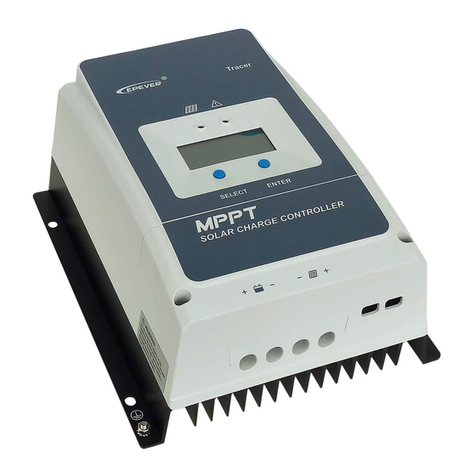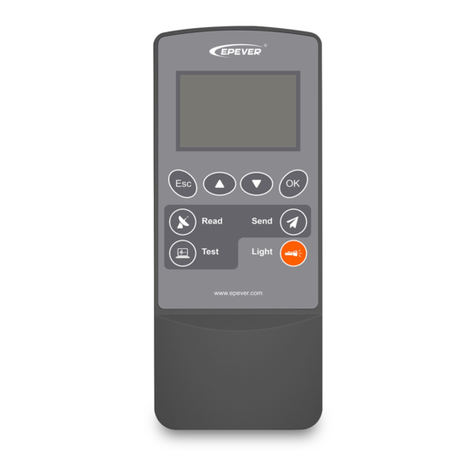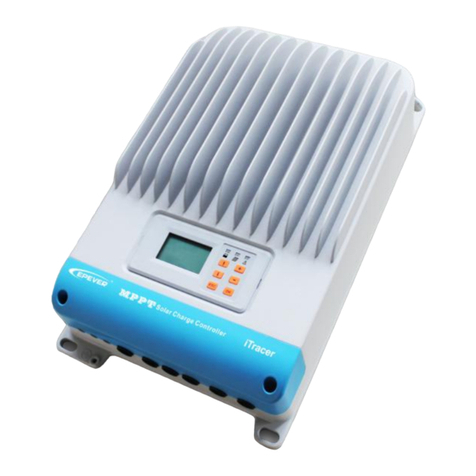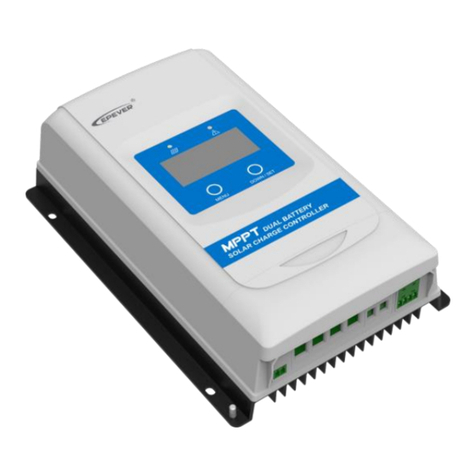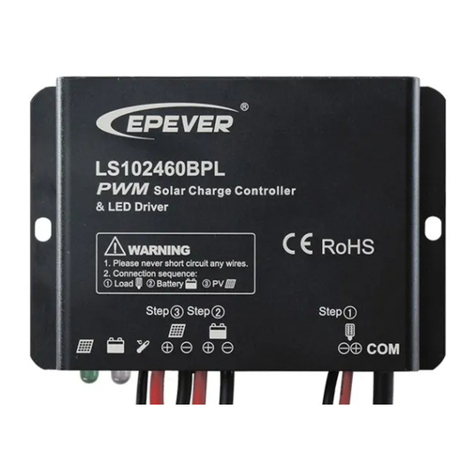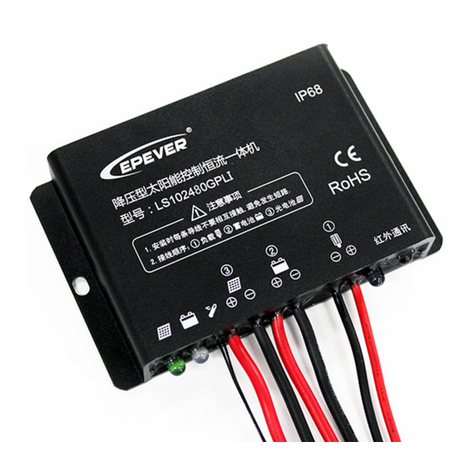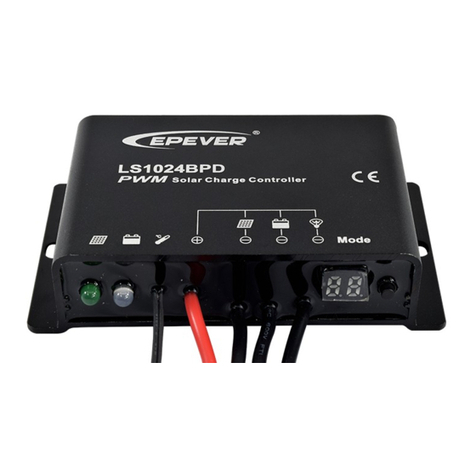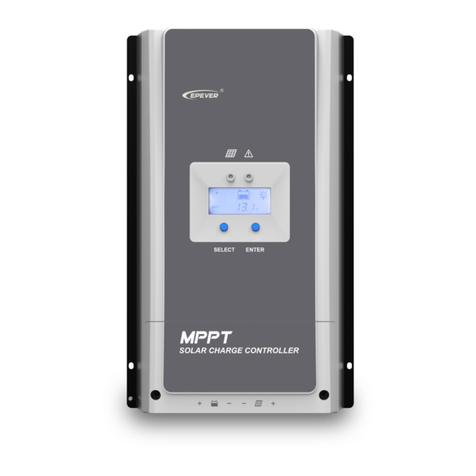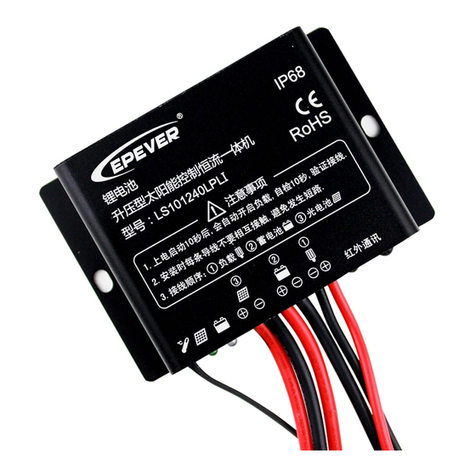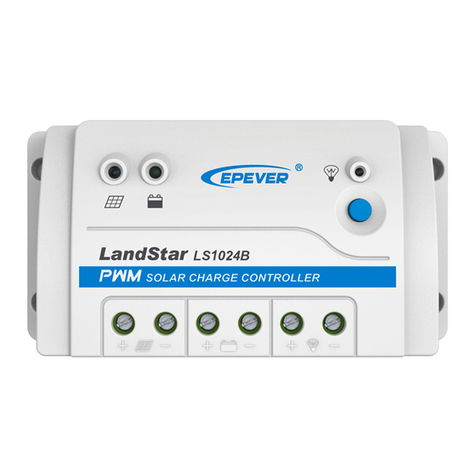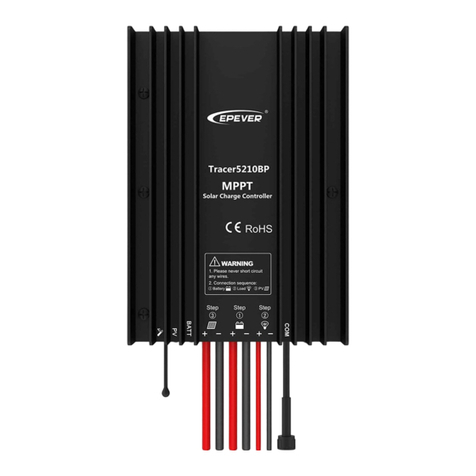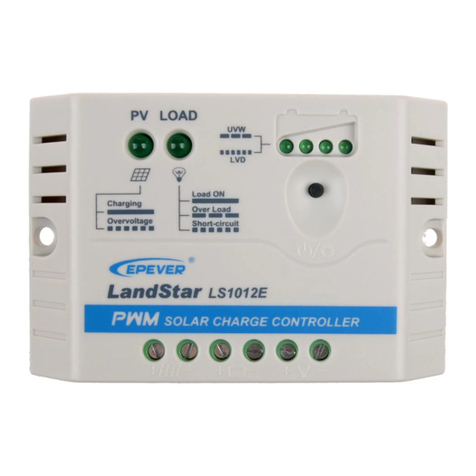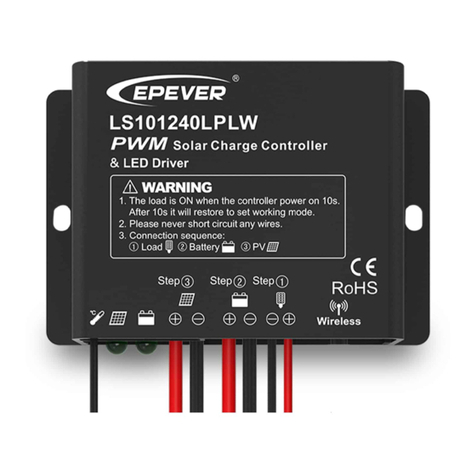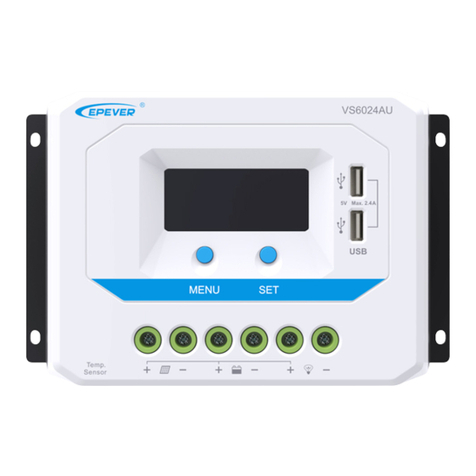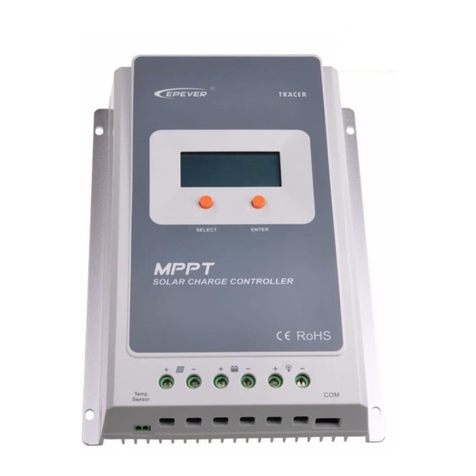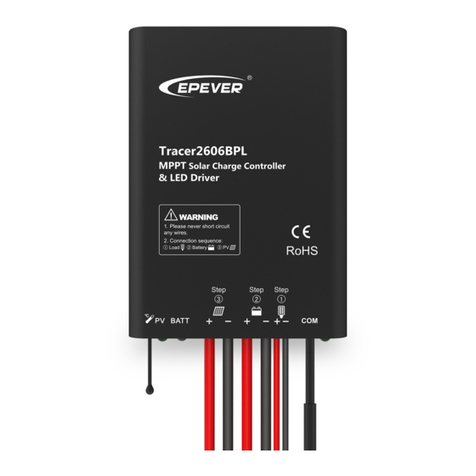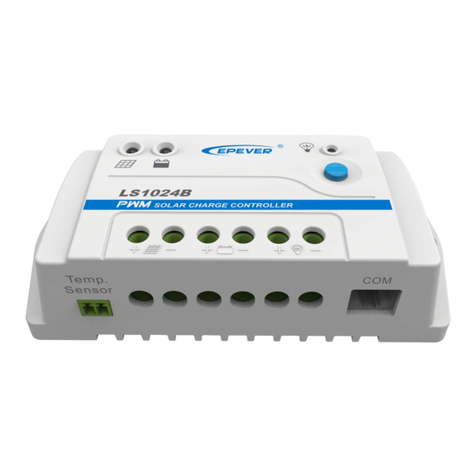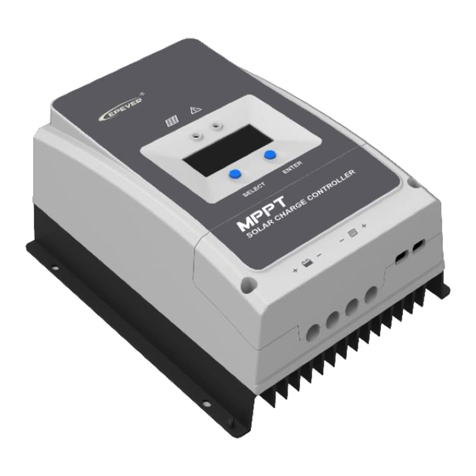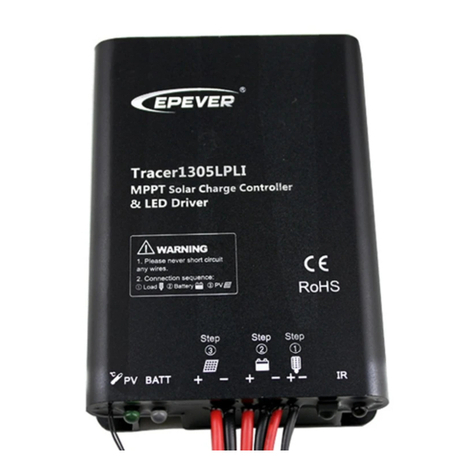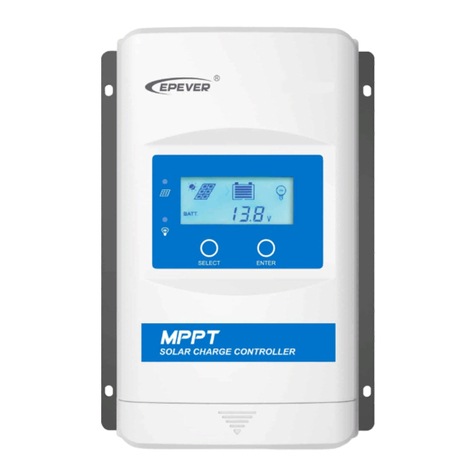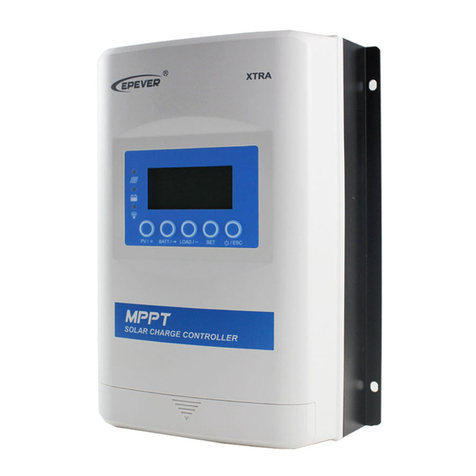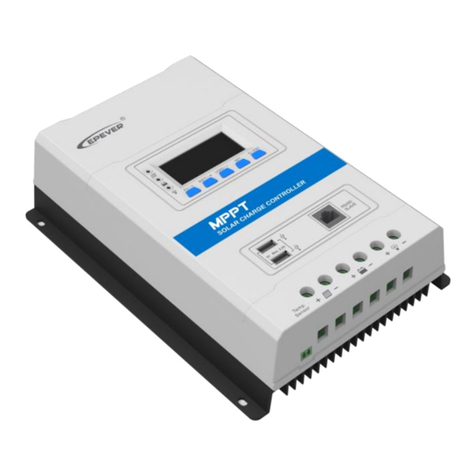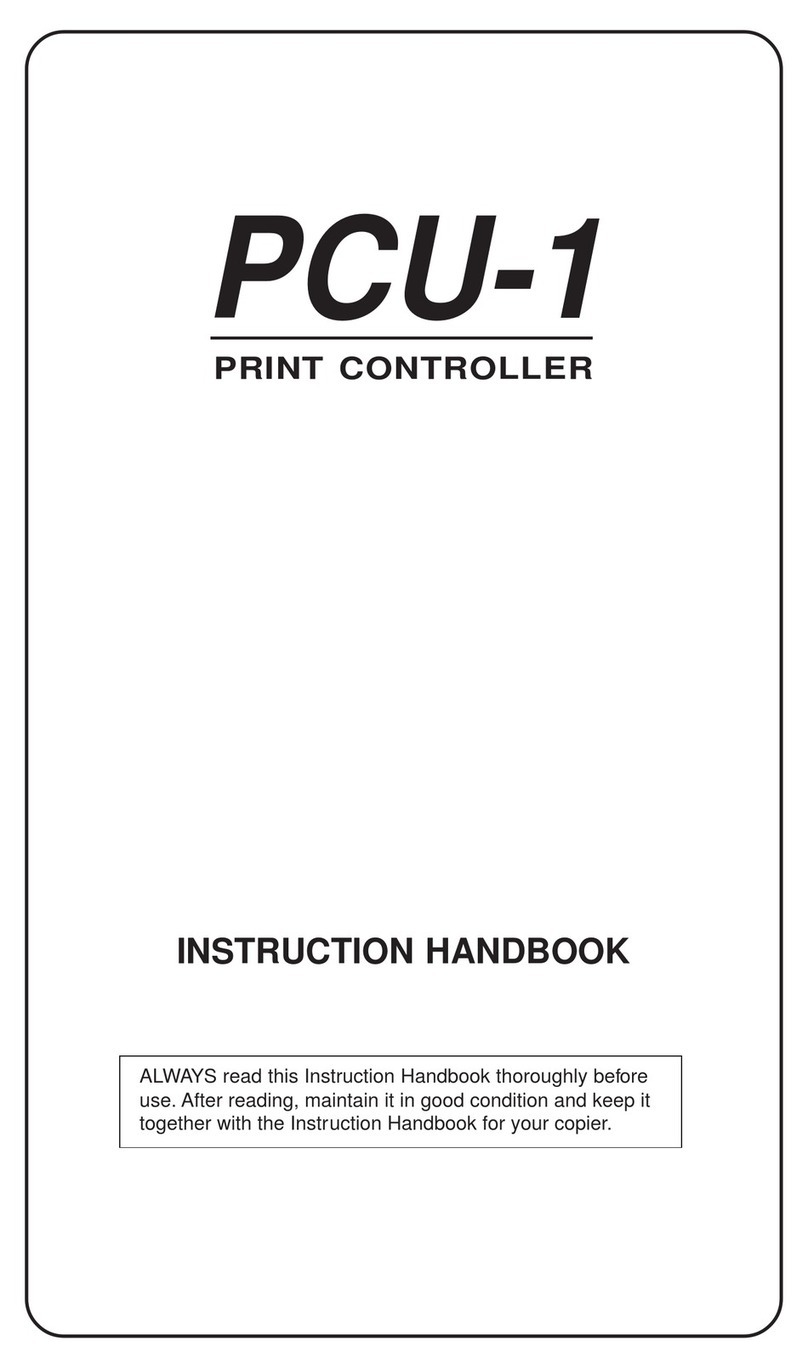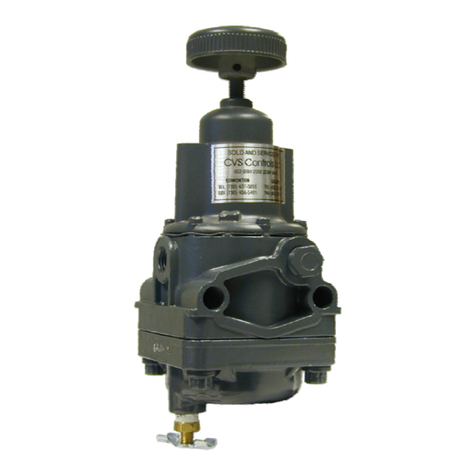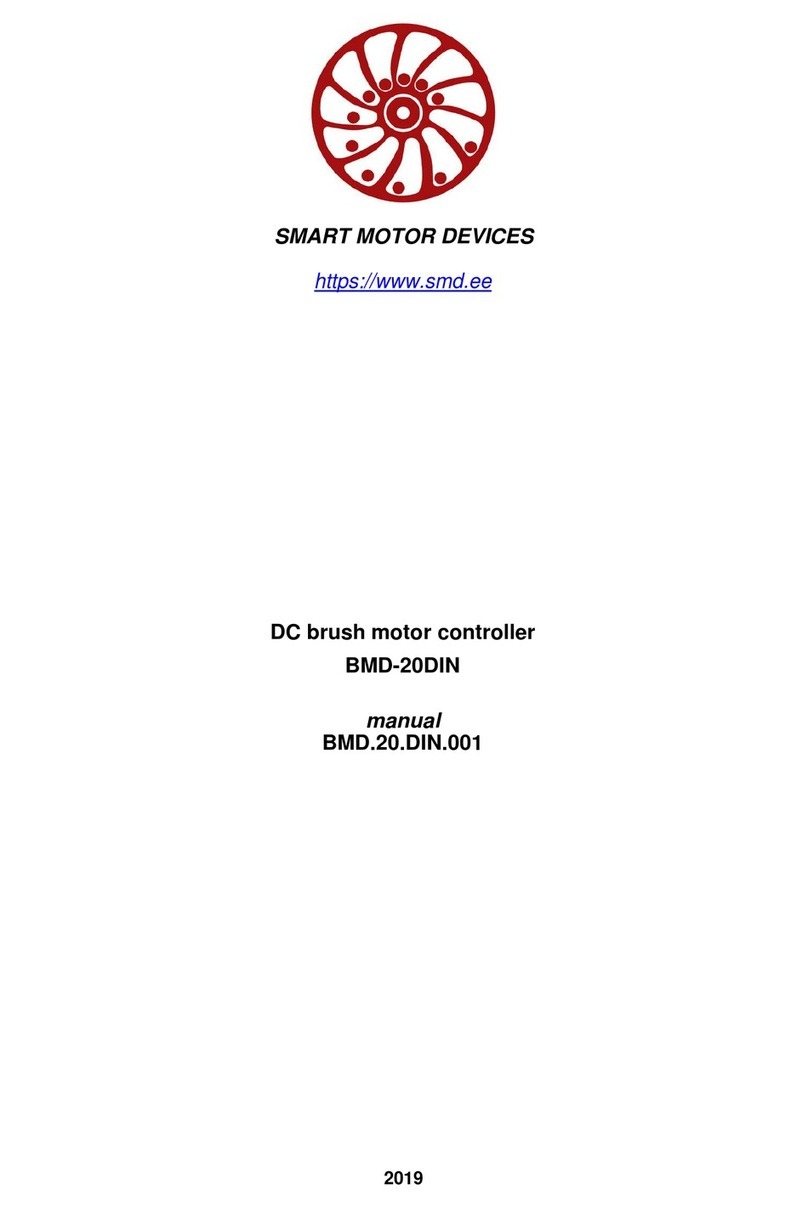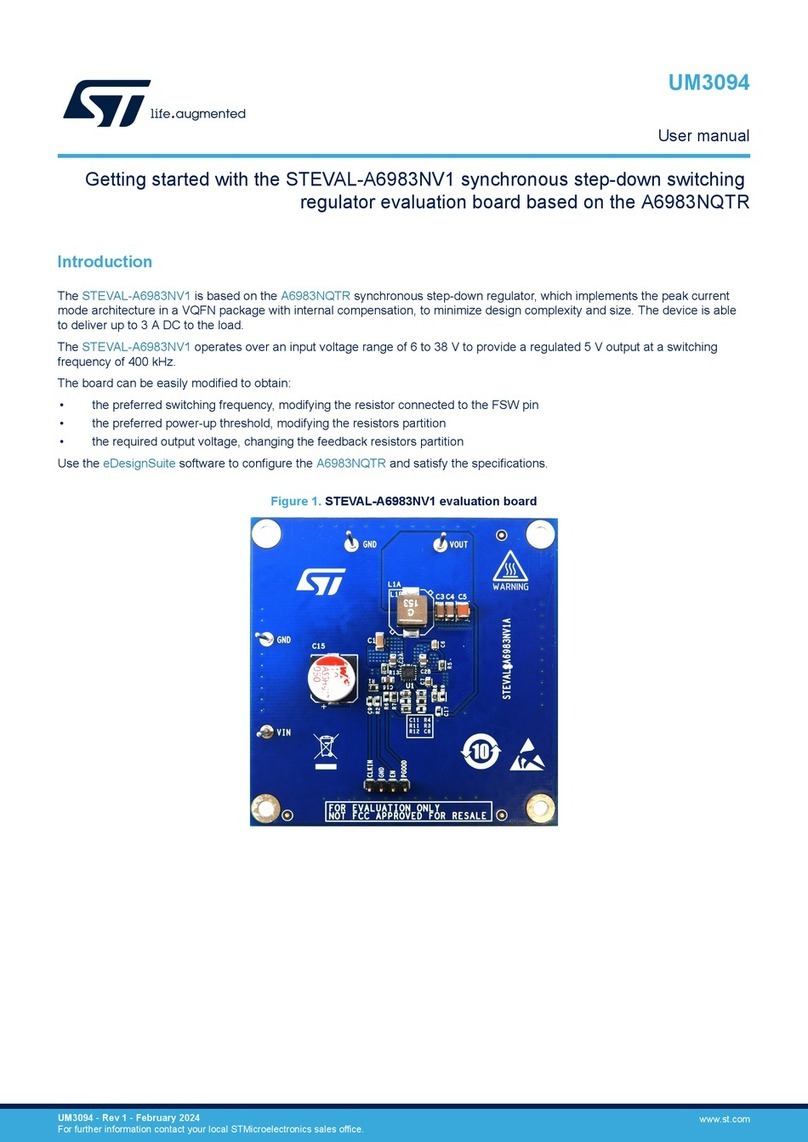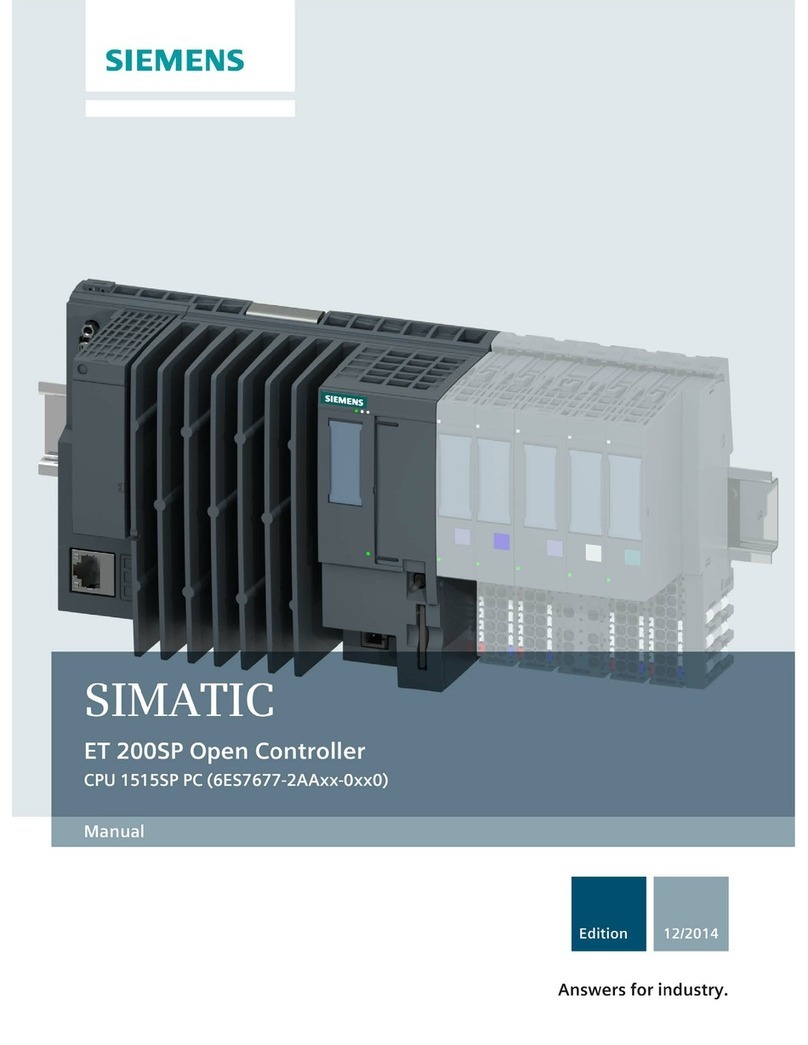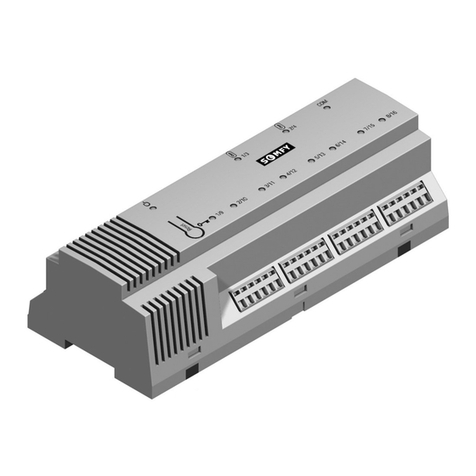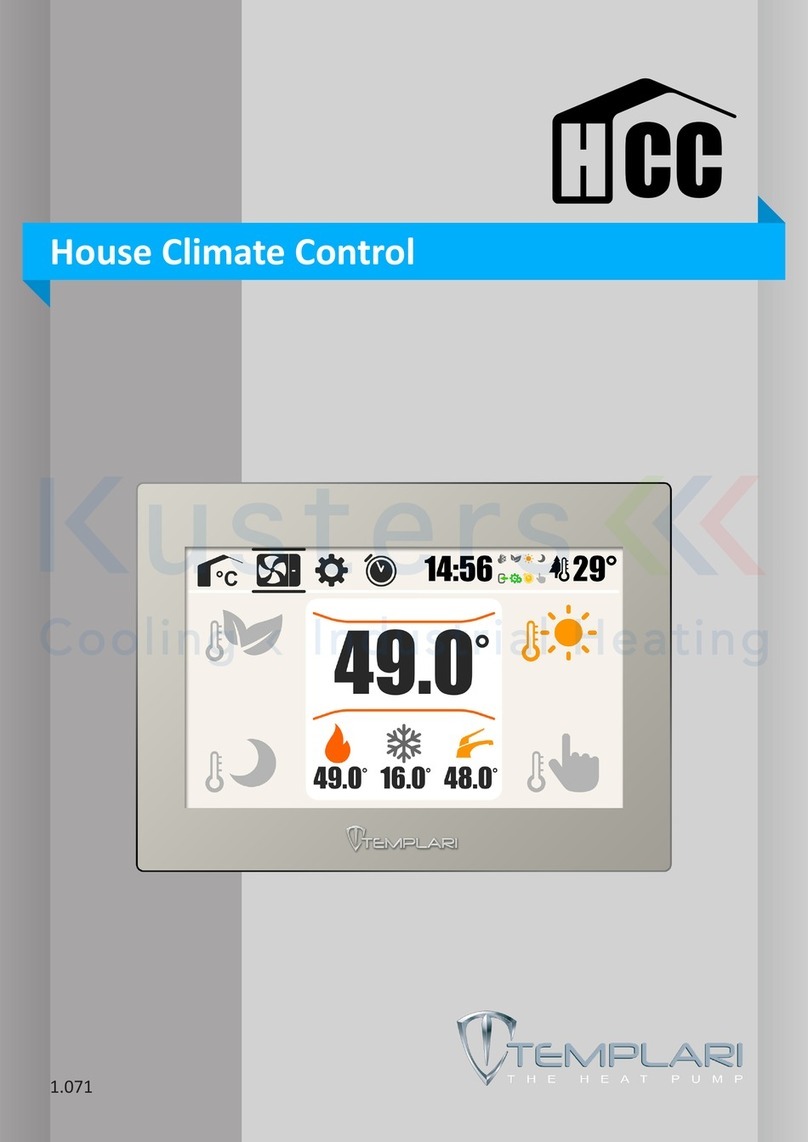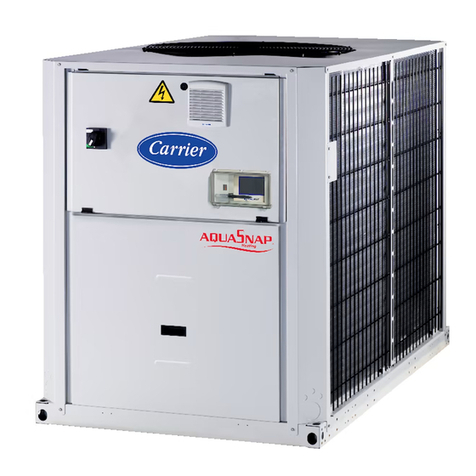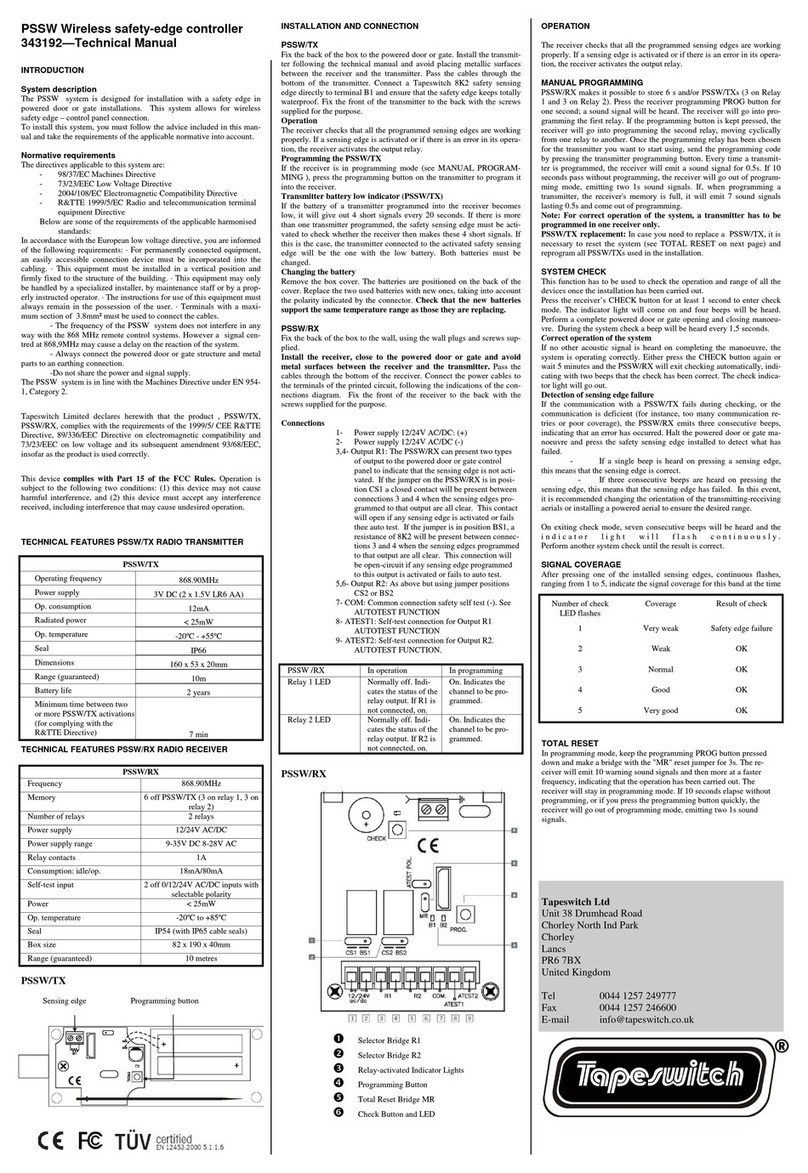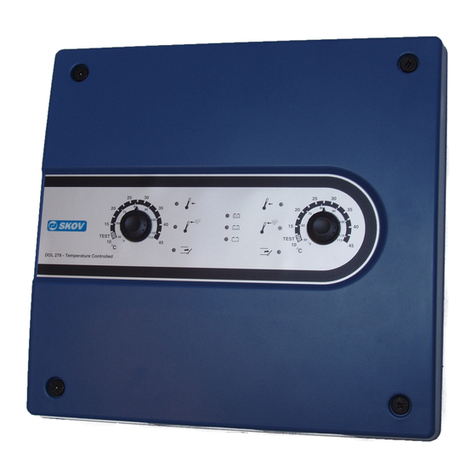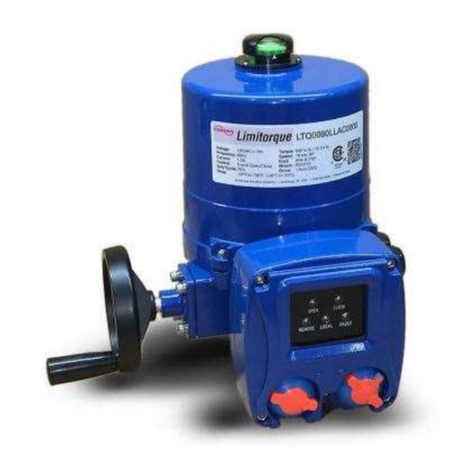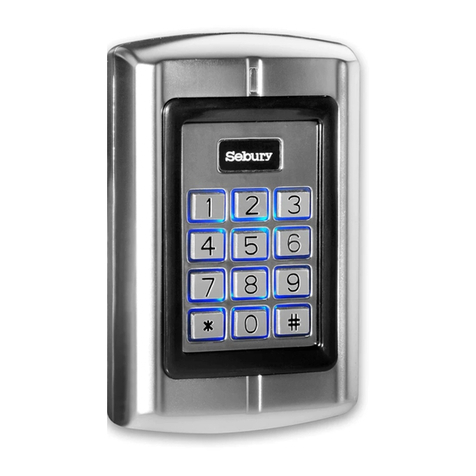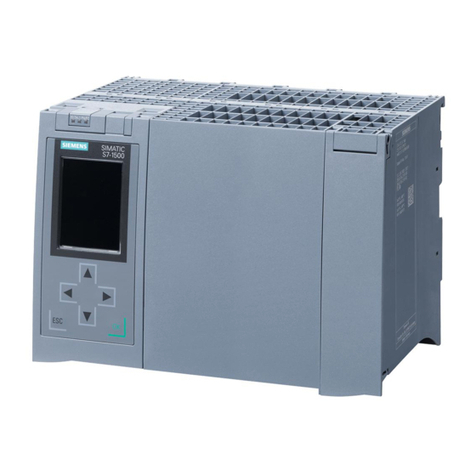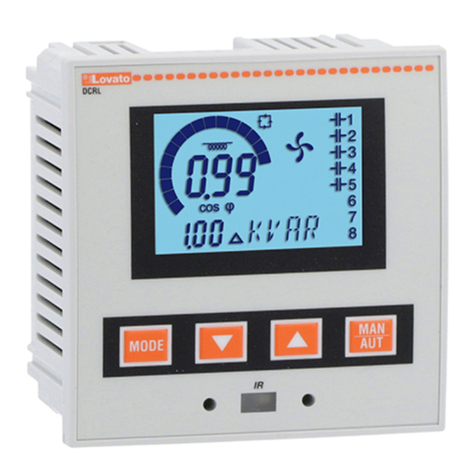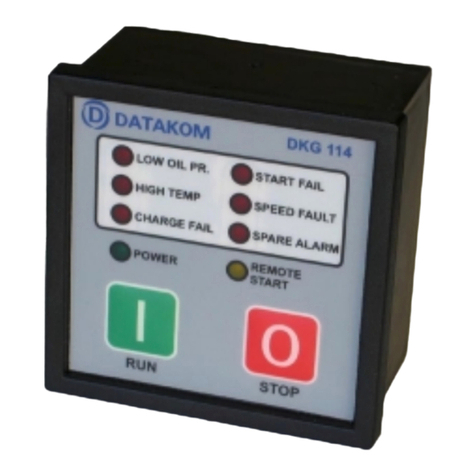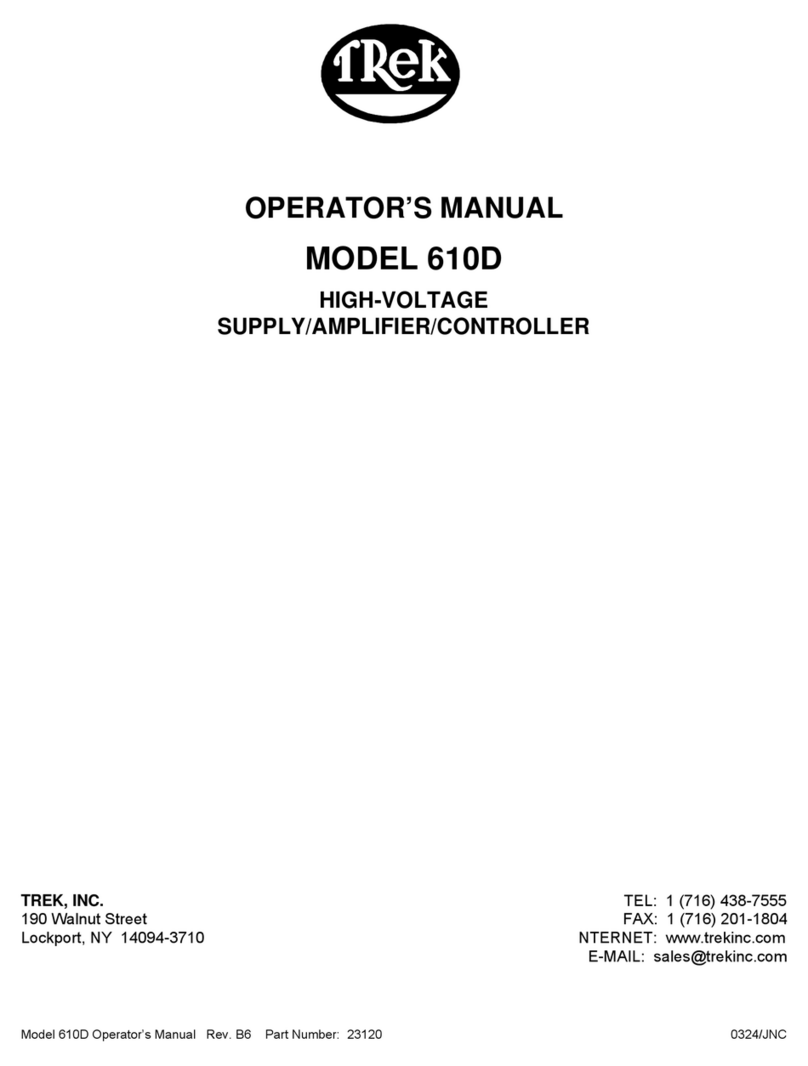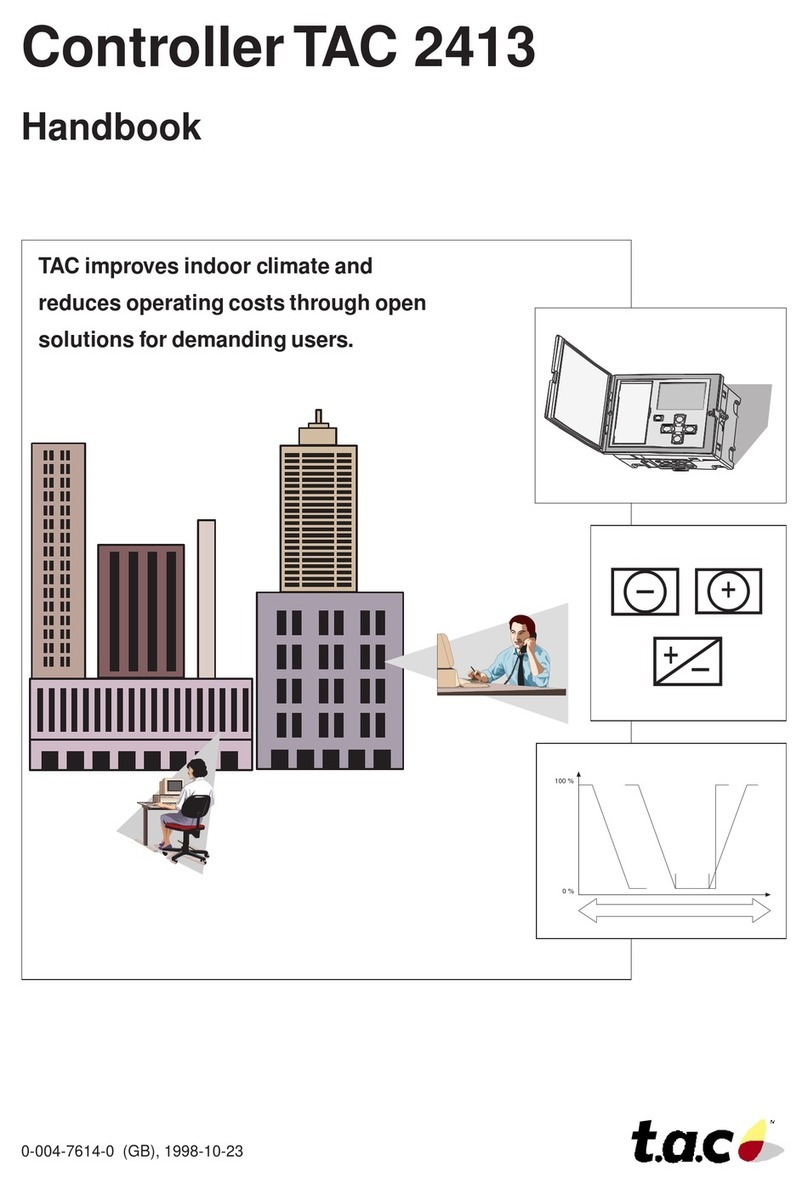
HUIZHOU EPEVER TECHNOLOGY CO., LTD. Tel:+86-10-82894896/82894112/+86-752-3889706 Website:www.epever.com
1 2
MPPT Solar Charge Controller
---with built-in LED Driver
1. Overview
The Tracer BPL series lithium battery MPPT solar charge controller combines solar
charge controller and LED constant current driver into one unit which is ideal for solar
LED Lighting, especially when dimmer function is needed. The advanced Maximum
Power Point Tracking charging methods enables the system charging and discharging
management to obtain the most radical optimization. Increase the system flexibility, yet
lower down the system cost. The features are listed below:
Adopt high quality components of ST,IR and Infineon, make sure product using
lifespan
Wide working environment temperature(-40℃~60℃)
Apply to lead-acid battery and lithium battery
Lithium battery self-activating and low temperature protection function
Maximum conversion efficiency of 98%
Advanced Maximum Power Point Tracking (MPPT) technology, with tracking
efficiency no less than 99.5%
Ultra-fast tracking speed and guaranteed tracking efficiency
Accurately recognizing and tracking of multiple power points
Lithium battery low temperature protection function
Lithium battery limit current in low temperature
Digital precision constant current control and the control accuracy are less than ±2%
Intelligent power mode with 365-day lighting control technology
Load reduce power automatically
Maximum output efficiency of 96%
PV and Load power limitation function
The output current can be adjusted among the rated power and current range
Monitoring and setting parameter via Mobile APP, PC Monitor setting software with
RS485 communication interface.
Use of standard Modbus communication protocol for RS485 bus connections,
communication protocol compatibility much better
Connecting the IOT(Internet of Things) module and Cloud Server monitoring software
to realize remote monitoring of the multi-machine system
The RS485 connector can provide power supply
Aluminum housing for better cooling
Real-time energy statistics function
IP67 waterproof degree
2. Product Features
Charging Status LED indicator
PV Positive and Negative Wires
Battery Status LED indicator
Battery Positive and Negative Wires
Load Positive and Negative Wires
(1)The temperature sensor short-circuited or damaged, the controller will be charging or
discharging at the default temperature 25 ºC.
(2)The port can provide the DC power supply of 5VDC/150mA and have the short circuit
function.
NOTE: When the RS485 communication port is not working, the
waterproof cap must be installed to prevent water getting in.
3. Wiring
Reference for Serial connection of LED
NOTE: The above one LED (1W, 3.3V) is calculated. If the user uses the
unconventional LED, The actual LED voltage must less than the Max.
Load Output Voltage.
WARNING:DO NOT electric shock! The product built-in boost LED driver,
the output voltage is higher than the human safety voltage.
Connection Order
1) Connect components to the charge controller in the sequence as shown above and
pay much attention to the “+” and “-”. Please don’t insert the fuse or turn on the breaker
during the installation. When disconnecting the system, the order will be reserved.
2) After power on the controller, check the battery LED indicator on the controller, it will
be green. If it’s not green, please refer to chapter 9.
3) Connecting a fuse in series through battery positive (+) in the circuit and the battery
circuit fuse must be 1.25 to 2 times to the rated current. The installed distance is within
150mm.
4) The process of charging and discharging can’t operate simultaneously, and the
discharge process is prior to charging.
Load self-test function
The load is ON when the controller power on 10seconds. After 10 seconds it will restore
to set working mode.
4. LED Indicators
PV connection normal
but low
voltage(irradiance)
from PV, no charging
No PV voltage(night
time) or PV connection
problem
Over discharged
Low temperature
Set parameters
successfully
5. Load Working Mode
1) Manual Mode
2) Light ON/OFF(Default)
3) Light ON + Timer
Light ON + Timer1
Light ON + Timer2
Light ON + Timer3
4) Real-time Control
Control the load ON/OFF time through setting real-time clock.
5) Lntelligent Power Mode
After the mode of intelligent power reduction is turned on and the capacity of the storage
battery is lower than 50%, the LED load will make adjustment by automatically reducing
the power in a linear manner according to the capacity of the storage battery, and mean
while the load will operate based on the minimum value between the set value and the
value after power reduction. Moreover, the mode of intelligent power reduction will be
exited after charging is started on the next day.
NOTE: In the mode of Light ON/OFF and Light ON/Timer, the Load is
turned on after 1Min. delay,the delay time can be set.
6. Accessories(optional) and Software
1)PC Software(www.epever.com ——Solar Station Monitor)
2)APP Software
Android phone(www.epever.com——ChargeController(Li) )
IPhone(APP Store——EPEVER——EP-01)
※MT50 does not support the relevant parameters of lithium battery.
※Thank you for selecting the Tracer BPL series lithium battery
MPPT solar charge controller with built-in LED driver. Please read
this manual carefully before using the product and pay attention to
the safety information.
Turn-On voltage (Adjustable):
5V(12Vsystem),delay10min.
Turn-Off voltage (Adjustable):
6V(12Vsystem),delay10min.
Note:24V system voltage×2


